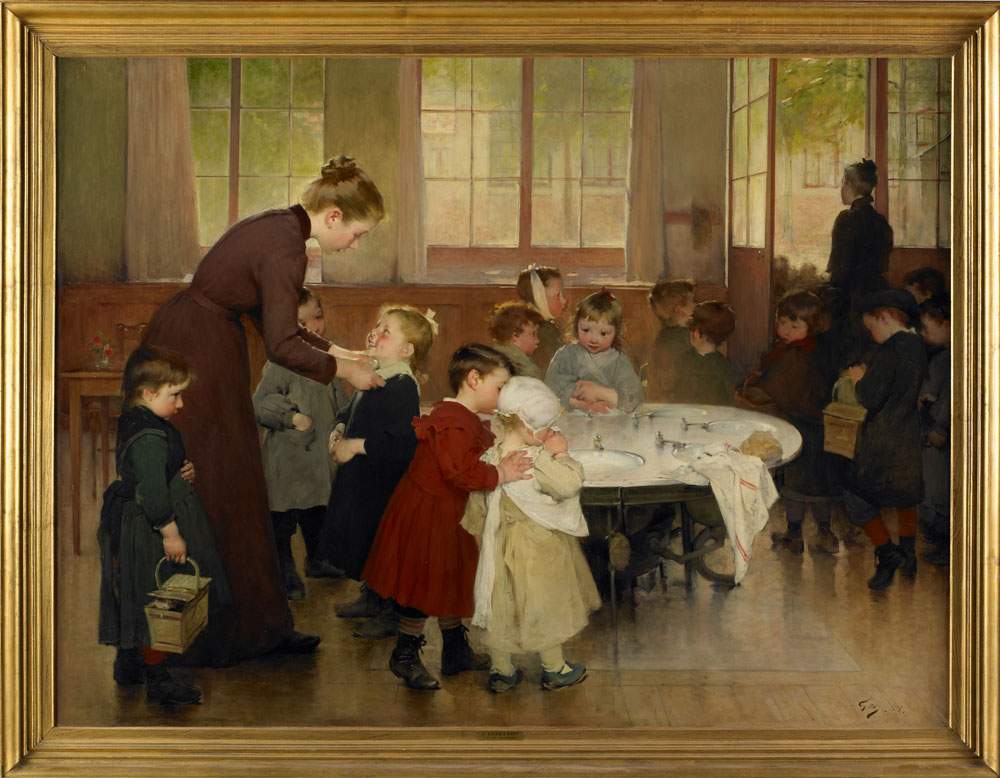Illegio celebrates the great masters
An exhibition that intends to make us reflect on the importance of the masters we meet along the path of our existence: people who leave in each of us an indelible memory for what they have transmitted to us, for the passion and seriousness that characterizes them. An opportunity to emphasize the fundamental role that wisdom and its dissemination should play in an age when it is often forgotten.
This is the aim behind the exhibition that will be held in the Casa delle Esposizioni in Illegio, a small mountain village in the province of Udine, from May 12 to October 6, 2019. And the main subject is also reiterated by the very title of the exhibition: Masters.
Through forty works from France, Spain, Switzerland, the United Kingdom, the Vatican, and Italy, a narrative will be arrived at that spans almost a millennium of art history: in fact, the oldest work on display dates back to 1145, while the “most recent” one is from 1968.
With about a month to go before the opening of the Illegian exhibition, which was created at the behest of the Comitato di San Floriano association, curator Don Alessio Geretti declares a preview of the salient features on which the exhibition is based and unveils some of the works selected for the exhibition itinerary. First and foremost, the intention to create an exhibition with high quality works, some of which have never been seen before in Italy, and with great names in art history, such as Pablo Picasso (Malaga, 1881 - Mougins, 1973). Significant will be the presence of three mysterious and fascinating cases yet to be studied, one of which concerns a still-debated aspect about the ’author of a well-known work; the other two cases concern an unpublished work closely related to Giovanni Bellini (Venice, c. 1433 - 1516) and a discovery on which various scientific studies and analyses are still underway.
Among the artists featured are Henri Jean Jules Geoffroy (Marennes, 1853 - Paris, 1924), Joshua Reynolds (Plympton, 1723 - London, 1792), Jules Bastien Lepage (Damvillers, 1848 - Paris, 1884) and Vittorio Bonatti (Mantua, 1890 - Milan, 1973).
In particular, Henri Jean Jules Geoffroy’s The Nursery School, created in 1898 and housed at the Centre National des Arts Plastiques in Paris, was chosen as the symbolic image of the exhibition. Loving is the figure of the teacher, portrayed as she adjusts the collar of a little girl, her pupil, who looks at her smiling in token of mutual affection.
By Joshua Reynolds, on the other hand, is Venus Binding Love, a painting probably executed in 1751 inspired by Titian: the Venetian artist’s work of the same subject is in the Galleria Borghese in Rome. Three female figures can be seen in the foreground, one of whom is Venus who is blindfolding her young son Amore, while the other two come before her with a bow and quiver; a winged putto rests gently on Venus’s shoulder, observing the scene. Reynolds’ similar painting comes from the Beecroft Art Gallery in Southend-on-Sea.
Jules Bastien Lepage depicted Diogenes in 1877 in a painting preserved at the Musée Marmottan Monet in Paris. A work that recalls meditation on the inner conditions of love for truth, passion and sacrifice, characteristics required of a master.
From theBrera Academy of Fine Arts, on the other hand, comes Vittorio Bonatti’s The Animator, a 1920 painting in which the figure of Christ walks in front of a large crowd that follows him religiously.
Hours: Tuesday through Saturday from 10 a.m. to 7 p.m.; Sunday from 9 a.m. to 8 p.m.
Tickets: Full 12 euros, reduced 9 euros for students aged 18 to 25, over 65. Free for under 6s, University of Udine students and FVG Card holders.
Image: Henri Jean Jules Geoffroy, The Nursery School (1898; Paris, Centre National des Arts Plastiques)
 |
| Illegio celebrates the great masters |
Warning: the translation into English of the original Italian article was created using automatic tools. We undertake to review all articles, but we do not guarantee the total absence of inaccuracies in the translation due to the program. You can find the original by clicking on the ITA button. If you find any mistake,please contact us.





























